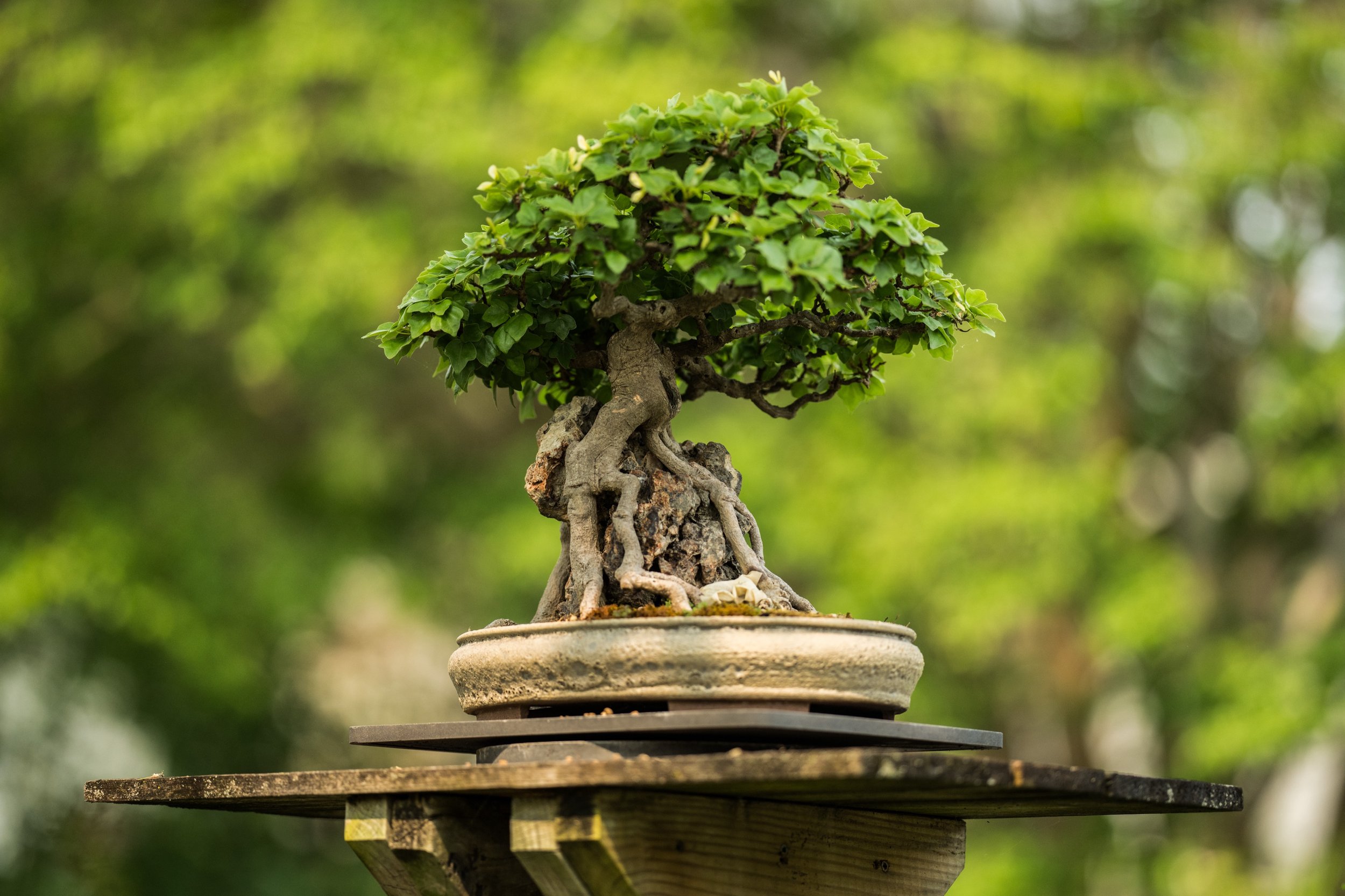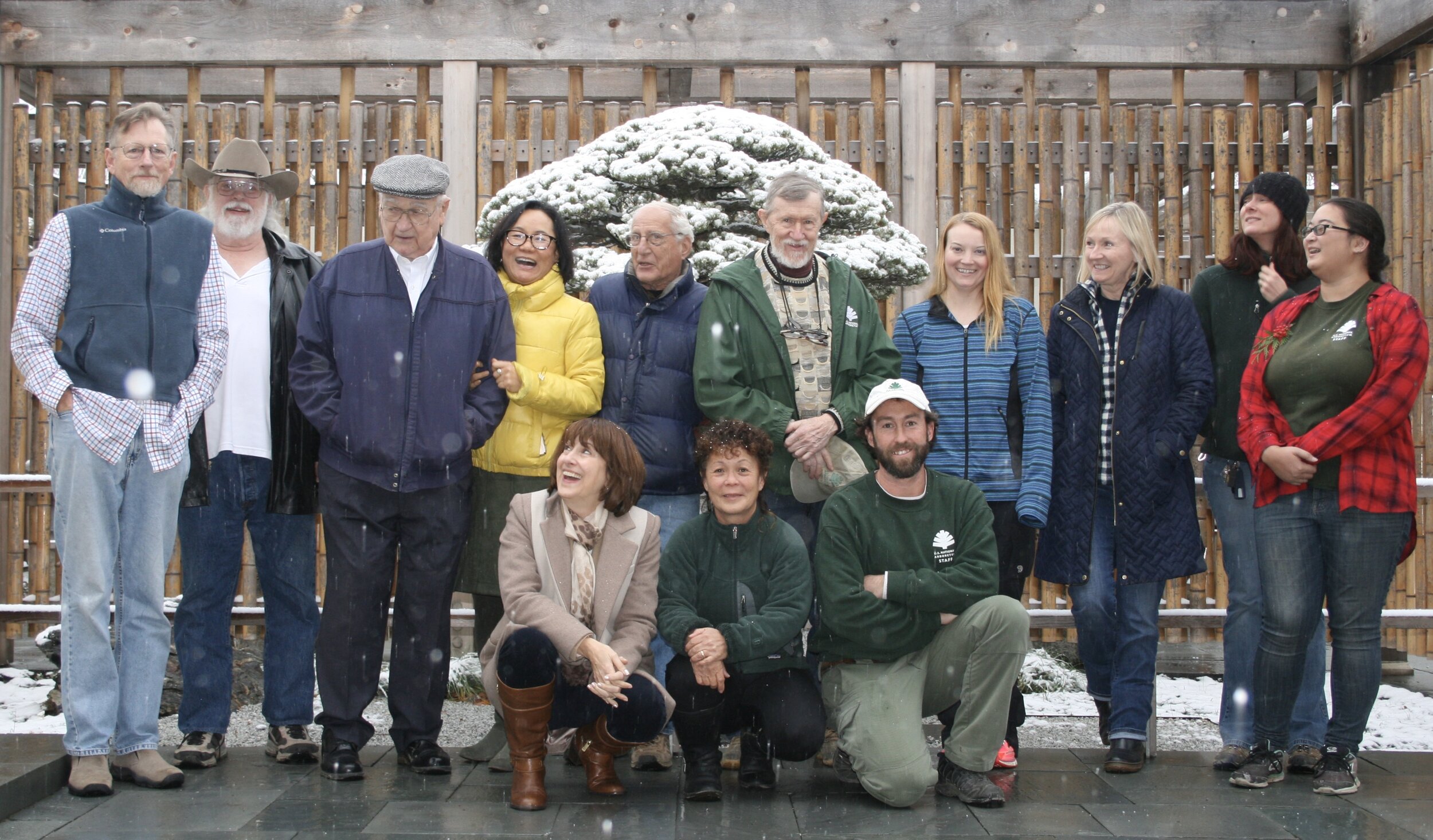The National Bonsai Foundation is saddened to hear that bonsai artist Mary Madison, a dear friend to NBF and donor to the U.S. National Arboretum’s collection at the National Bonsai & Penjing Museum, passed away July 28 at 91 years old.
Known as the Buttonwood Queen for her revered work on buttonwoods, a species native to the United States, Mary was an icon in the bonsai world. She grew up in Florida, often traveling to the natural beauty displayed in the Florida Keys, which sparked her passion for horticulture. Her first taste of bonsai came in the form of photos from a former boyfriend who served in Japan after World War II who sent her pictures of bonsai, which spurred her to try tree training herself. Mary ended up studying under two world-renowned bonsai masters, John Naka and Ben Oki, until their deaths.
Throughout her more than 60 years in bonsai, Mary served as a mentor to many rising and established bonsai artists, including Ryan Neil. In a moving tribute to Mary, Bonsai Mirai student and deadwood artist David Cutchin wrote, “Mary exemplified what it is to be a good person. She treated everyone with kindness and humility, her resolve was to do what’s right and forgive regardless of the situation… Quitting wasn’t a part of her vocabulary. She was a catalyst of human decency, hard work, and love to anyone she befriended.”
Bonsai Societies of Florida recently named their annual native species award the “Mary Madison Award” to pay homage to her immense contributions to the art of bonsai.
Museum Volunteer LeeAnn Duling and First Curator’s Apprentice Sophia Osorio repotting one of Mary’s buttonwoods.
Two of Mary’s trees reside at the Museum, one being a buttonwood she donated in 1990. She was also the original collector of a buttonwood that ended up in the office of the Central Intelligence Agency before they gifted the tree to the national collection in 2019.
NBF is grateful to have often crossed paths with Mary, as well as for her leadership as one of the first women in bonsai.
“Mary embodied the spirit and authenticity of the Everglades and, with her warm and engaging personality, she opened our eyes to the beauty of tropical bonsai,” NBF Chair Emeritus Felix Laughlin said. “Like her good friend John Naka, she will always be remembered and celebrated as an iconic and beloved teacher who inspired the world of bonsai.”
NBF Chair Emeritus Jack Sustic said Mary’s kindness and eagerness to share her bonsai knowledge and passion inspired everyone she met.
“It was such an honor for me to care for Mary’s buttonwood while serving as curator,” Sustic said. “Mary's buttonwood in the North American Collection is a quiet testament to her love and passion for bonsai and will serve as a living legacy to a life dedicated to this wonderful art."



























